#top places to visit nepal
Explore tagged Tumblr posts
Text
0 notes
Text
I can’t believe it’s already October 20th. That means we’ve been traveling for an entire month (and a day). How wild is that? Japan, Nepal, Istanbul, now Italy. It’s truly been a whirlwind to say the least. World wind?
It’s been hard to put adequate weight/importance on the things we’ve been doing and to distinguish the unique experiences and feelings of the places we’ve been. Each country or city or neighborhood we visit deserves its own interpretation, but I haven’t felt like I’ve been able to slow down enough to fully appreciate and comprehend what all of it actually means. Which makes me feel a sense of guilt, like am I missing something? Am I moving too fast? Are we doing too much? I feel pangs of meaningfulness in brief moments like when I’m standing barefoot on the grounds of a beautifully intricate Buddhist stupa in Pokhara, or when I’m bouncing around a hot little taxi in the dense and dusty streets of Kathmandu. Even (especially) when I’m gazing out at the Himalayas, at a snow topped peak larger than anything I’ve seen in my entire life. But they’re moments. And they pass. And I feel mad at myself for not holding onto the feeling longer. One thing I have realized is that when I’m able to quiet down (which really only started to happen when we were trekking), I found that moments from my past came floating back to me. Memories, people, interactions I hadn’t thought about in years would trickle into my consciousness. I’m not sure if it was the lack of distraction, or maybe a form of meditation, but it unlocked some hold I had on certain moments/experiences of the past. Except now, years later, I was thinking about them with a new knowledge or awareness of the present —drawing parallels and making comparisons and bringing new meaning to old memories. So maybe these brief moments while traveling aren’t meant to have so much power right now. Maybe I’ll feel it for a few minutes, file it away and save it for later? Maybe I’m too hungry to FEEL all the FEELINGS in this very moment and need to chill out and be patient?? Or maybe we live in a world of constant noise and stimulation and distraction and my brain is broken. I don’t know, what do you guys think???
2 notes
·
View notes
Text
The Fight
Trying to pick up the pace a little bit, but I'm not very good at writing action so this might be a bit clunky. Please excuse me.
Mountain's Peak (Part 1)
Nepal Sanctum (Part 2)
Talk it out (Part 3)
In which we let it all out
Ramattra found his brother exactly where he expected to; Tucked away on the highest roof top of the Monastery's temples, an old withered place few monks visited simply for the egregious amount of single wide stairs clearly poorly placed by the original builders.
"Brother Mondatta is looking for you," Ramattra spoke with no worry of startling his brother, positive Zenyatta had already sensed his approach at least three levels down. The fact that he hadn't run was a good sign.
"He can look a while longer.." Zenyatta replied, relaxing from his curled up position to allow his legs to dangle over the edge of the building.
Ramattra sat himself down beside his brother, taking a moment to appreciate the view. The sun was setting, stars had started to dot the soft pink sky. From this high up, one could truly see on into forever if they desired to.
"You hit the human..." Ramattra finally pressed, giving a glance to Zenyatta, who curled back in on himself slightly.
"I did."
"You said you would only use what I taught you in self defense."
"I did not use what you taught me, dear brother. I used my fist."
Ramattra couldn't help the slight chuckle hearing his elder defend himself so sharply released. If he could still shoot back, then he couldn't be all that tore up about what he'd done.
"Mondatta will expect an apology when we finally return."
"I did nothing to him." Zenyatta once again uncurled himself, his legs once more dangling over the building's edge as he relaxed into the flow of conversation with Ramattra.
"To the human, Brother."
Zenyatta released a loud, dramatic sigh noise, clunking his head into Ramattra's shoulder. "I would rather be placed on cattle clean up for the next 7 years."
Ramattra chuckled once again, "And I would love to assist you with such chores, but that is not Mondatta's way."
"No... I suppose not..." Zenyatta's voice softened as he once more pulled his knee to his chest, placing a hand on the ground next to Ramattra for balance.
Ramattra found his hand placed gently over his brother's, keeping his sensors locked to the stars as he leaned his head atop Zenyatta's.
With the sunrise the brothers would make their way back down to the village, they'd catch Master Mondatta on his way back from his morning meditation, when the monastery is silent and the human is still asleep. Zenyatta would give his apology, and be given laundry duty in return, with Ramattra would happily assist with despite Mondatta's preaching on how one must face their misdoings on their own.
That would all come tomorrow. For tonight, the two sat peacefully on the temple roof top, hands intertwined in a painfully human way, counting stars until the sun arose the next morning.
That stare made everyone in the monastery uncomfortable. Bright red eyes that only ever saw the monks as who they were, what they had been made for, how they'd failed or succeeded at a task that had been forced upon them.
It was sickening.
Across from Zenyatta stood the human, shouldering off thick layers of cloth and robes and scarves until only one remained, tied tightly off at his waist by a cream orange cincture belt. He then removed the thick, straw woven snow boots Mondatta had made for him, stepping bare foot into the chalk drawn circle of the training area, holding his hands up in a ready pose.
He'd kept his eyes locked on Zenyatta, not in a glare of malice, or even his usual annoying fascination, but a neutral look that challenged him without words.
Ramattra's hand grabbed tightly to the back on Zenyatta's upper robe. He was shaking. He was going to stop this.
Zenyatta shoulder off his brother's grasp and the robe along with it, leaving him in only his pants and the red cloth he'd kept tied around his waist.
Stepping into the ring, Zenyatta stood wide and placed his palm against the human's, keeping their gaze locked.
"If you win, I'll leave. Permanently. And I'll tell every human I meet they're not welcome here." Emile spoke evenly, despite the rapid pulse Zenyatta could feel coming from their freezing fleshy hand.
He tilted his head in amusement, "And what will you get if you happen to win?"
This was the sort of confrontation that would usually draw this particular human to tears, so it was quiet the shock to see him hold together while speaking. "You can decide that when it happens."
'When' Zenyatta thought on, wrapping his fingers around the human's small hand. It was cold, and soft, and easily crushable in even the flimsiest of Omnic hands.
"Usually a match is called when one is forced from the ring, but that feels a touch too easy, wouldn't you agree?" The human nodded along with Zenyatta's proposal, "So we keep going until one of us taps, agreed?"
Zenyatta watch the human give a small nod once more
And then kicked them as hard as he could right in the stomach
Emile flew out of the ring, scratching to a stop along the stone flooring. He hacked and coughed, gripping onto his stomach. If he'd eaten anything for the past few days he surly would have hurled it up.
"Get up." Zenyatta spoke from the ring. The human did as commanded, pulling himself up on shaky legs. He did not glare at Zenyatta for landing the first blow, he did not look on in fear for how much stronger his opponent was, he did not bask in awe at how mighty a kick it was. He kept his neutral expression.
And that pissed Zenyatta off worse than anything else.
Blow after blow, the human continued to get back up. Even after he'd started spitting up blood. Even after his glasses were shattered on the stone ground, rendering him near blind. Even after he'd stopped being able to feet his fingers in toes in the cold and after his arm stopped moving and after his ankle had made such a horrible crack and swollen to the size of an orange.
And even after Zenyatta still stood perfectly pristine.
Emile hadn't landed a blow on his opponent. Zenyatta was starting to doubt he was even trying to. Had he even raised his hand once to the monk? Had all he done was stand there and take Zenyatta's blows?
Zenyatta clenched his fists, "Get Up." He demanded, as he had over and over again, to the human laying still on the stone before him. "Get Up and Hit Me."
Emile's form shook as he pushed himself up with only one arm, his white hair dangling before his face, tips red from his own blood. As commanded he got up on shaky legs once more and looked to Zenyatta with those red eyes that pierced into his history, a history he'd been trying so hard to ignore, to hide and run away from.
"Get up." Zenyatta demanded again after landing a hard hit right into the human's nose. It was broken for sure.
Emile did as commanded.
"Brother, that is enough-" Ramattra reached to grab Zenyatta, to put an end to this, but stopped inches away.
"It's not enough..."
The human's voice was ragged, breathless and broken and shaking. He sounded on the brink of death.. He very well might have been.
"It's not... enough...."
Blood mixed with tears down Emile's face, big wet eyes stared at Zenyatta, making the Omnic hesitate.
Ramattra wouldn't dare touch a human, but he made a motion like he was going to either way, "Human you cannot take much more, please just call it-"
"I CAN'T." Emile's voice cracked, he coughed, and took a step just to keep himself from collapsing, "I can't... it's not... enough... yet...."
The human but his hand on his wrist, and Zenyatta found himself mimicking the motion. His finger tips touched delicately at his exposed arm wire, one of many fragile pieces of himself he'd been forced to show to the world after nearly loosing his life before coming here.
He could still feel the human's cold finger tips on it...
"it's not... enough... to... ma...ke up.. for what... i..."
His body was too heavy, everything hurt, and the world was spinning.. In his last few moments of consciousness Emile braced himself for one more cold embrace from the stone steps of the battle field..
And instead found warmth...
#Emile's Writing#In which Zenyatta beats me the fuck up#Ramyatta#In the first half at least... Hinted at any way#That's the INTENTION any way they do have feelings for one another but aren't. Like. Together really#Self insert#Self insert Fanfic#Proselfship#Proship Selfship#Zenyatta#I SHOULD probably actually tag him for these.... but I don't kgdjbkgfkjg I'll get better about that#This was SUPPOSED to be the last chapter of the Nepal Youths arc with Delinquent Zenyatta buuuuuuut#We've got one more to go now and then we can stop having Delinquent Zenyatta#But sensitive fraidy cat Ramattra is staying for a few more chapters because I LOVE HER#Anyway. Thanks for reading if you did!#Sorry the fight's kind of choppy like I said I'm not good at them#But it's necessary#This is one of those things I'd bring up with modern Zenyatta that'd make him want to curl up and explode ksdfjsdk#Genji would not believe me if I told him about this
8 notes
·
View notes
Text
Tagged by @deaths-accountant in this post! Thanks!
Relationship status: Single.
Favorite color: Orange! Orange is the best color.
Song stuck in my head: As a general rule, Super Mario World "Athletic" plays in my head on repeat. Might be a contender for "song I have spent the most net time listening to". Ah, Mario...
Last song I listened to: SCANDAL - Scandal Baby
Last thing I Googled:

Mostly I google things that I half remember to make sure I am remembering them right. For instance I didn't know the name of that Super Mario World theme off the top of my head. And for a post earlier I had to find that IRA statement on Margret Thatcher. And so on.
Dream trip: I may have posted about this before, but my dream trip (or, well, one of them) is probably to travel from Afghanistan to Southern China by way of the south side of the Himalayas. Start in Kandahar and then go up to Kabul, through the Khyber pass into Peshawar, then to Jammu and Kashmir, Himachal Pradesh, Uttarakhand (not sure exactly where I would visit in these places), go through Nepal, see various things and especially visit Kathmandu, then travel around the Assam/Nagaland/Arunachal Pradesh region and finally go north into China, probably ending in Chengdu.
This trip is uh, Not Feasible at the moment, as it probably involves crossing more contested borders than any other geographically coherent trip you could imagine. Although one could presumably make it worse by trying to go from their into South Korea by land. Anyway, I think I'll have to save this one for a different political climate.
8 notes
·
View notes
Text
10 Best Skydiving Places in the World
Planning to tick off skydiving off your bucketlist? It’s time you get out and muster the courage to experience the adrenaline rush and sensation of flying in the air at or beyond 13000 feet above the ground. Check out our list of the most fascinating places to skydive if you are looking for the ideal drop zone with unique scenery to make this adventure experience the most memorable experience of your life.

Dubai, United Arab Emirates
If you crave an extreme adventure on a Middle Eastern holiday, Dubai is the spot to visit. Plunging above the Palm Jumeirah - the stellar sprawling palm tree-shaped artificial islands encircled by the azure Persian Gulf- is an experience you will remember forever. One can also go skydiving in Dubai amid the Arabian deserts, and visitors in UAE spending time in the capital emirate can also experience Skydiving in Abu Dhabi. The Skydive Abu Dhabi tickets are less expensive than those for Skydive Dubai. Still, if scenery is truly important to you, you should unquestionably go to the Palm Jumeirah drop zone.
Franz Josef and Fox Glacier, New Zealand

The natural beauty of New Zealand and its reputation as the "Adventure destination of the world" place it among the top destinations for those seeking an adrenaline rush. The Franz Josef and Fox Glacier in New Zealand's South Island are where you can experience gusty, chilly winds whipping your face as you float above breath-taking glacial vistas. According to surveys, the Skydive Franz Josef and Fox Glacier are presently the most picturesque drop zone in the world.
Sydney Wollongong, Australia

Australia is one of the most well-known skydiving destinations in the world, and there are many drop zones to choose from. Among them, Sydney Wollongong has received positive feedback from skydiving enthusiasts. It is one of the world's most famous places for skydiving and lets you experience a thrilling rush of adrenaline while admiring Sydney’s harbour, city, and skyline. Take to the skies and fly instead of going to the Sydney beaches on your next visit!
Le Marche, Italy
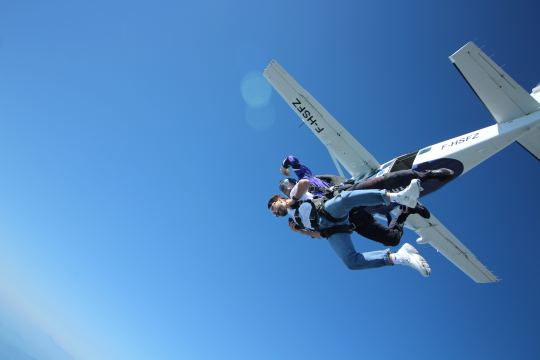
Le Marche is a spectacular spot to get high on adrenaline and enjoy a freefall amid Italy’s Toscana scenery. Get the vantage point to tumble down and soar on top of the Adriatic Sea’s azure waters and cliffs of Apennine mountains.
Pattaya, Thailand
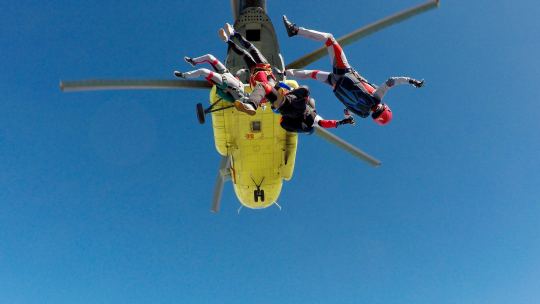
Thailand's tropical landscape attracts beachgoers and water sport enthusiasts to its regions; however, Pattaya, one of Thailand's most popular tourist spots, welcomes you to gear up for a skydiving experience. The Skydive Pattaya offers a tandem skydiving experience over the beautiful Nong Kho Reservoir in Chonburi.
Grand Canyon, United States of America

The Grand Canyon is a famous natural wonder, but getting a bird's eye view of its stunning splendour is an unrivaled experience. Head for the adventure of a lifetime when you sign up for a skydiving experience at this gorgeous, red, rocky canyon.
Interlaken, Switzerland
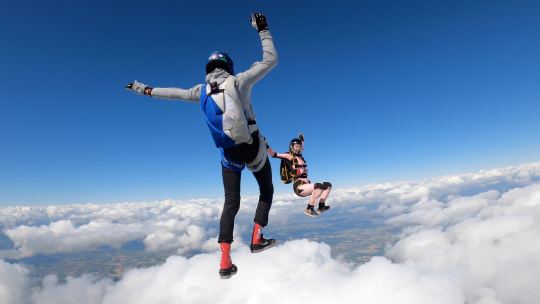
Nothing compares to Interlaken's high-definition hues of Swiss alpine panoramas. This region of Switzerland, well-known for its ski resorts, gondola rides, and scenic funiculars, also provides an unconventional way to take in its breathtaking scenery by skydiving in the Swiss Alps. If you are an adrenaline junkie and are off to Switzerland, don't miss the chance to skydive in Swiss!
Mount Everest, Nepal

There is another way to see the summit of Mount Everest that does not include difficult treks. All you need is the courage to jump out of a plane, and you can fly above the highest mountain in the world! Yes! Mount Everest is also a drop zone for skydiving and is one of the most dizzying, thrilling adventures to witness in your lifetime!
Seville, Spain
Fly high leisurely above Seville, then prepare for a freefall while taking in the incredible views of southern Spain! Seville is among the best places to visit if you like extreme adventures. Skydiving here is a unique, once-in-a-lifetime experience you should enjoy if you love outdoor adventures!
Maldives
You can explore the underwater realm while on a leisurely Maldives holiday. How about extending the adventure by having an over-the-water, airborne adventure? Sign up with SkyDive Maldives to enjoy this exhilarating experience. As you fly above its pristine isles, the aerial views of Maldives is a moment you will cherish for a long time.
Conclusion
Skydiving is the ultimate experience for those seeking an amalgam of the euphoria of soaring in the air and amazing panoramas from above. The abovementioned ten skydiving destinations take you on an extraordinary journey if you seek the ultimate adrenaline rush. From the world-famous Grand Canyon and the exquisite Swiss Alps to the pristine Maldives and the magnificent terrain of New Zealand, these drop zones let you conquer fear, take a step ahead, and feel the thrill of falling amid some of the world's most diverse and fascinating panoramas. So, for those who dare to take the plunge, the world's best skydiving places await, eager to offer an unforgettable and life-changing experience. If you still want to soar but don't want to jump out of a plane, there are plenty of hot air balloon rides around the world to check out, offering a mild thrill of gliding above exquisite panoramas.
2 notes
·
View notes
Text
Death by Curry and Chiya
Since arriving I’ve eaten my weight in curry. The food is amazing and my hosts are so generous with their portions. It has become abundantly clear that I need to learn how to politely decline more food. Every time I turn around there is another snack or meal. I’m going to need new pants soon. Breakfast was perhaps my favorite meal so far. It was composed of roti, potato curry, and scrambled eggs. It was so good I ate every bite. I would later regret this decision.
Sunil had made arrangements to visit the local school on the hill. So, after breakfast we began initially on the road and then wandered through a forested area before catching the dirt road again. Each step was uphill—gained about 800ft of elevation. It was a steep climb and we walked almost an hour to reach the top. I could feel the potato curry and chiya (a hot milk tea that somehow has a hint of almost cinnamon) swishing in my stomach as we made our ascent. Between the heat, elevation and my new found eating habits I thought I might puke. Kathmandu valley sits around 4,000 feet of elevation. I, however, powered through and pretended to be in shape. The effort it took was more than worth it.
We encountered children walking to school, exchanged warm namastes with neighbors, and were offered water along the way. The culture here is so warm and you can feel the sense of community. Once we reached the top we reached a small school that contains grades 1-3 and serves 22 children in the area. I was able to meet with the principal and discuss changes she has implemented over the last year as she has assumed her new role. Under her direction the school has more than doubled the number of children attending. She also described some of the challenges they face in terms of funding, how difficult the school is to access due to its location (children must be able to walk to the school), and the availability of trained teachers. We spent about an hour taking and drink chiya before she treated us at a local restaurant.
The restaurant was situated at the top of the hill with views on both sides over looking Kathmandu. The food once again was awesome. The middle of the plate contained about two cups of rice and was surrounded by a spicy chutney, chicken curry, pumpkin greens and potato curry, fresh slices of cucumbers and carrots. Then yogurt and dahl were placed in small bowls on the side. We ate in the traditional style with our right hand. As good as the food was I could not possibly eat all of it. After lunch m, we sat outside the restaurant drinking chiya and took in the views.
The trek back down the hill was an adventure. We took a shortcut walking over terraces, slipping between barbed wire fences, and occasionally following the road. By the time we arrived back at Sunil’s, I was exhausted, so hot and sweaty it looked like I took a shower with my clothes on, and still so full. After a quick snack of watermelon and iced coffee, I took my afternoon rest. I feel so privileged to be so welcome and able to see and experience Nepal, the people, and the education system. I do, however, feel that if I continue eating curry and drinking chiya at this pace I may die—but what a way to go!

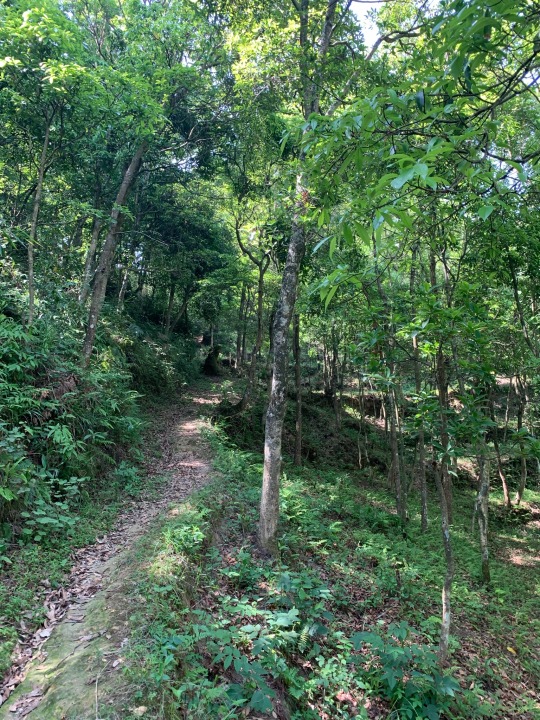
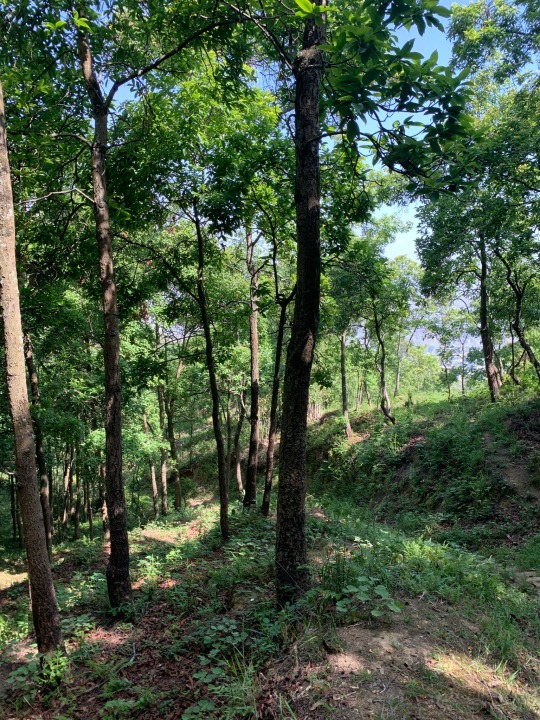
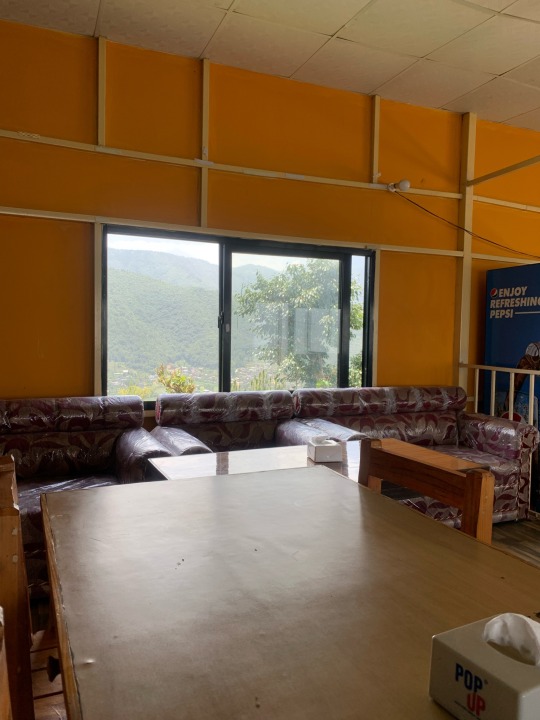

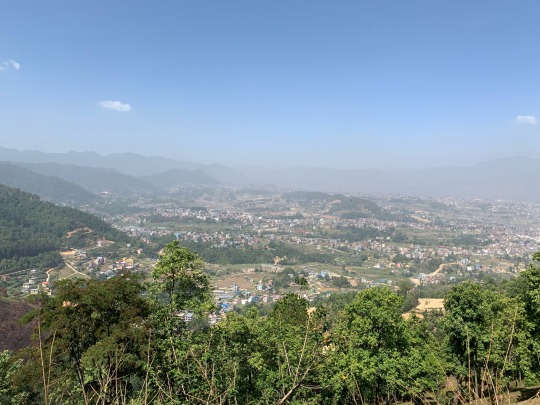
3 notes
·
View notes
Text
How does a fertility expert perform ICSI in Nepal?
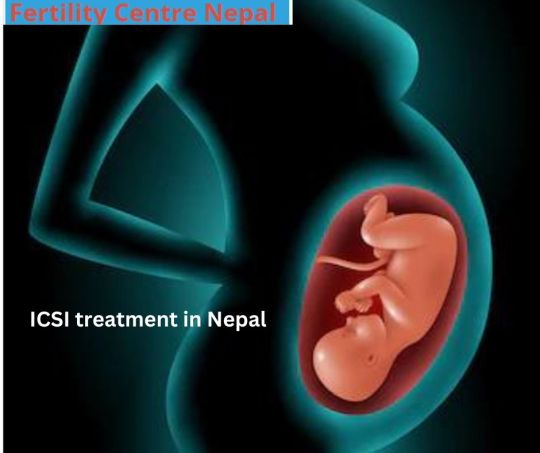
ICSI treatment in Nepal is the best fertility procedure recommended to treat male infertility issues, due to which a fertile woman cannot conceive a baby. ICSI in Nepal is a procedure in which fertility experts surgically extract male member sperm from his ejaculate by using these advanced techniques such as (i) Testicular sperm aspiration (TESA) and (ii) percutaneous epididymal sperm aspiration (PESA). Suppose fertility experts fail to retrieve enough sperm through these two advanced techniques. They use the most advanced & latest technique, which is Testicular sperm extraction (TESE).
Once enough sperm is successfully retrieved, the fertility expert begins with the IVF procedure, in which they use the hollow needle that passes through the pelvic cavity of the upper vaginal wall. The fertility expert removes the fluid from the follicles with transvaginal ultrasound, & isolates the woman's eggs.
Once eggs are isolated, the fertility expert combines the woman's eggs with her husband's retrieved sperm to facilitate fertilization. The fertility expert monitor the eggs growth & development. Once the eggs are developed, the fertility expert will directly inject a single active and healthy sperm into each egg to ease the fertilization process.
Once fertilization occurs, the embryologist chooses the most active embryo/s & places it into the birth mother's uterus to establish a successful conception.
After 14 days of embryo transfer, the couple must visit the fertility centre for the pregnancy test. The expert conducts an ultrasound to scan a woman's ovaries to listen to the infant's heartbeat. One expert confirms that the infant's heartbeats are normal; it indicates a successful conception has occurred & couple gets discharged from the fertility clinic to a local obstetrician, where pregnancy grows as usual.
Is ICSI treatment in Nepal a safe procedure?
We know that all surgical procedures are associated with low or high risk; similarly, ICSI in Nepal does also associate with some risks that include the following:
· ICSI treatment in Nepal is a fertility procedure that carries a specific genetic defect found in a small number of children born through ICSI; however, the issues attached to ICSI might cause by underlying infertility rather than the treatment itself.
· Suppose a boy has been born through an ICSI in Nepal; then there can be distinct possibilities that a baby boy inherits his father's infertility. It is a clear case of a genetic disease of male infertility, significantly associated with the Y chromosome. It means there are chances that the baby boy born through an ICSI procedure carries his father's infertility at a later age.
The fertility experts at Fertility centre Nepal advise couples to undergo genetic testing before an embryo transfer to avoid inherited congenital disease that can pass into a male newborn through an ICSI procedure. It is a clinic that hires qualified & trained fertility counsellors who help couples to understand the ICSI treatment in Nepal before proceeding.
What's the ICSI treatment success rate in Nepal?
The ICSI treatment success rate in Nepal is relatively higher compared to the conventional IVF methods. The research says that the ICSI treatment success rate in Nepal mainly depends on factors like women's age, the cause of male infertility, etc. However, to date, the ICSI treatment success rate in Nepal is around 75 to 85% for couples under 35 & these success rates slightly dip down to 40 to 50% for couples above 40. The study says that the healthier couples, the chances of producing healthy eggs & sperm are higher compared to older couples. It is the reason that the success rates for older women dip down, and the chances of conceiving a baby also decrease.
Why do people prefer Fertility centre Nepal for ICSI in Nepal?
Fertility centre Nepal is a leading and top-notch fertility clinic that offers the appropriate ICSI treatment in Nepal without any hidden charge. People should know that if any clinic offers IVF with ICSI in Nepal for less than NPR 2 50 000, it means they are hiding some costs that couples need to bear at the end of the procedure when they are waiting for a discharge summary from the clinic. To avoid such a situation, it's the responsibility of the couples to do their research correctly for the fertility clinic because it is a matter of their hard earns money and the emotions attached to the treatment.
Fertility centre Nepal is a clinic where people get transparency in the treatment from the initial stage until the baby delivers to them. All the documents related to the couple's treatment are saved in the clinic's database so that couples do not carry their file whenever they visit the clinic.
Fertility centre Nepal hires highly qualified and trained fertility professionals who understand the criticality of the treatment and the situation through couples are going through, such as financial, emotional, and mental stress. The fertility experts at this clinic decided to keep a minimal cost of ICSI treatment in Nepal so that individuals can easily afford the procedure & enjoy their parenthood happily. Also, they have various payment modes through which couples can quickly pay their fertility bills.
Offering such reasonable treatment allows couples to enjoy the moments with their baby and gives the fertility experts happiness that they are the reason for millions of smiles. People can check on the internet about Fertility centre Nepal and accordingly make their decision to plan fertility treatment with us. The experts & other medical staff of this clinic are confident about the services they offer, which fulfil the dreams of many childless couples. It is a clinic where people will find highly qualified professionals who make pregnancy possible for couples of growing ages.
How much does ICSI in Nepal costs for one fresh cycle?
ICSI in Nepal will cost between NPR 2 50 000 to NPR 3 80 000 for one fresh cycle. It is the estimated cost & the actual will be confirmed when the fertility expert examines the couple. Based on the couple's medical report, the expert plans their ICSI treatment in Nepal & ensures the cost couples have to pay for the treatment. It is a very reasonable procedure in Nepal compared to other countries. The reason behind offering such suitable ICSI treatment in Nepal is that the fertility experts at this clinic wish to spread happiness worldwide.
People who do not wish to spend much on fertility procedures can visit the Fertility centre Nepal. The experts at this clinic give the best price which suits to couple's pocket & fulfil their dream of having a baby.
#ICSI in Nepal#ICSI treatment in Nepal#best ICSI treatment in Nepal#ICSI treatment success rate in Nepal
3 notes
·
View notes
Video
youtube
Nepal's 39 Holidays 🎉 #nepal, #nepal tour, #nepal vlog, #nepal travel, #nepali, #nepal tourist places, #nepali calendar, #bike ride in nepal, #must visit places in nepal, #visit nepal, #holiday, #nepal apartments, #nepal video, #nepali calenda, #hostel nepal, #nepal hotels, #top 10 nepali schools, #driving in nepal kathmandu, #nepali asmr, #nepali vlog, #nepali news, #nepal top ten school, #nepal top 10 schools, #nepali girl dance, #lalitpur nepal, #nepali patro, #nepali girls, #nepali schools for girls, #shorts, #short, #viralvideo, #youtubeshorts, #shortvideo, #ytshorts
0 notes
Text
How to Visit Nepal from Gorakhpur
If you’re planning a journey from Gorakhpur to Nepal, you’re in for an exciting adventure. Nestled in the lap of the majestic Himalayas, Nepal is a land of mesmerizing landscapes, vibrant culture, and spiritual tranquility. Gorakhpur, located near the India-Nepal border, serves as a key gateway for travelers heading to Nepal. This guide will walk you through everything you need to know about traveling from Gorakhpur to Nepal and provide insights into the Gorakhpur to Nepal Tour Package for a hassle-free experience.

1. Why Start Your Nepal Journey from Gorakhpur?
Gorakhpur is a strategic gateway for travelers heading to Nepal, thanks to its proximity to the Sunauli border, the primary entry point between India and Nepal. With excellent road connectivity, affordable transportation options, and convenient access to popular destinations like Kathmandu, Pokhara, and Lumbini, Gorakhpur simplifies travel planning for those venturing into Nepal.
2. Understanding the Gorakhpur-Nepal Route
The Gorakhpur-Nepal route spans approximately 90 kilometers to the Sunauli border and further into Nepal. After crossing the border, you can choose various modes of transport to reach major Nepalese cities.
Key Route Highlights:
Gorakhpur to Sunauli: 90 km
Sunauli to Lumbini (Nepal): 25 km
Sunauli to Pokhara: 260 km
Sunauli to Kathmandu: 275 km
3. Modes of Transportation
Traveling from Gorakhpur to Nepal can be customized to suit your budget and preferences. Here’s an overview of transportation options:
A. By Road
Private Car/Taxi: Ideal for families or groups seeking comfort. Taxis from Gorakhpur to the Sunauli border are readily available.
Buses: Budget-friendly buses operate frequently from Gorakhpur to the Sunauli border. From there, you can find Nepalese buses or vans heading to Kathmandu, Pokhara, and other destinations.
B. By Train
Although there isn’t a direct train to Nepal, Gorakhpur is well-connected by rail to major Indian cities. After reaching Gorakhpur, you can take a bus or taxi to the Sunauli border.
C. By Air
For travelers short on time, Gorakhpur Airport (Mahayogi Gorakhnath Airport) offers domestic flights to key Indian cities. You can take a connecting flight to Tribhuvan International Airport in Kathmandu from Delhi or other Indian hubs.
4. Border Crossing Formalities
Crossing the Indo-Nepal border at Sunauli is a straightforward process. Here’s what you need to know:
Documents Required for Indian Citizens:
A valid government-issued photo ID (Aadhaar card, Passport, or Voter ID).
No visa is required for Indian citizens to enter Nepal.
For Foreign Nationals:
A valid passport and visa for Nepal are mandatory.
Customs and Permits: Declare high-value goods if necessary, and check import/export regulations for a hassle-free crossing.
5. Best Time to Visit Nepal
Nepal offers breathtaking landscapes and cultural experiences year-round, but the timing of your visit can enhance your journey.
Spring (March-May): Perfect for trekking and sightseeing as the weather is pleasant, and rhododendrons are in bloom.
Autumn (September-November): Clear skies and moderate temperatures make this the best season for travel.
Winter (December-February): Ideal for lower-altitude destinations; higher altitudes can be very cold.
Monsoon (June-August): While lush and green, monsoon rains can cause travel disruptions.
6. Top Destinations to Explore in Nepal
From spiritual landmarks to adventure-packed destinations, Nepal has something for everyone. Here are some must-visit places:
A. Lumbini
As the birthplace of Lord Buddha, Lumbini is a UNESCO World Heritage Site that attracts pilgrims and history enthusiasts alike.
Distance from Sunauli: 25 km Key Attractions:
Maya Devi Temple
Ashokan Pillar
Monastic Zone
B. Kathmandu
Nepal's capital is a vibrant city blending ancient heritage with modern culture.
Distance from Sunauli: 275 km Key Attractions:
Swayambhunath Stupa (Monkey Temple)
Pashupatinath Temple
Durbar Square
Thamel Market
C. Pokhara
Known for its serene lakes and adventure opportunities, Pokhara is a paradise for nature lovers and thrill-seekers.
Distance from Sunauli: 260 km Key Attractions:
Phewa Lake
Davis Falls
Sarangkot Sunrise Point
Adventure sports like paragliding and zip-lining
D. Chitwan National Park
Perfect for wildlife enthusiasts, Chitwan offers safaris and unique jungle experiences.
Distance from Sunauli: 140 km Key Attractions:
Elephant safari
Canoeing
Jungle trekking
7. Where to Stay in Nepal
Nepal offers a range of accommodations to fit every budget:
Budget Options: Guesthouses and hostels in Thamel (Kathmandu) or Lakeside (Pokhara).
Mid-Range: Boutique hotels and family-run lodges.
Luxury: High-end resorts near Chitwan or Pokhara for a premium experience.
8. Must-Try Nepali Cuisine
No trip to Nepal is complete without indulging in its delectable cuisine. Some must-try dishes include:
Dal Bhat: A wholesome meal of lentils, rice, and vegetables.
Momos: Nepali dumplings served with spicy dips.
Thukpa: A hearty noodle soup.
Sel Roti: Sweet rice-based fried bread.
9. Local Etiquette and Tips
Greet locals with a friendly “Namaste.”
Remove shoes before entering temples.
Carry small denominations of Nepalese Rupees for local transactions.
Respect local customs and traditions.
10. Travel Tips for a Smooth Journey
Currency: Indian Rupees are accepted in Nepal, but denominations above ₹100 may not be usable.
Health: Stay hydrated and carry basic medicines.
Connectivity: Purchase a local SIM card for internet access.
Safety: While Nepal is generally safe, keep your belongings secure and follow local guidelines.
11. Conclusion
Traveling from Gorakhpur to Nepal is a seamless and enriching experience. With proper planning, you can explore Nepal’s majestic mountains, vibrant cities, and spiritual sites at your own pace. Whether it’s the cultural charm of Kathmandu, the tranquility of Pokhara, or the wilderness of Chitwan, your journey to Nepal promises to be unforgettable.
Pack your bags, start your journey from Gorakhpur, and embark on a life-changing adventure to the Himalayan paradise of Nepal!
0 notes
Text
Balti Curry House: The Best Indian Nepalese Cuisine Restaurant

For a delightful fusion of Indian and Nepalese flavors, Balti Curry House is the perfect dining destination. Known for its rich and diverse menu, this restaurant offers an authentic culinary journey through the tastes of India and Nepal. Whether you're a fan of spicy curries, savory momos, or aromatic biryanis, Balti Curry House caters to every palate with its expertly crafted dishes.
Why Balti Curry House Stands Out
Balti Curry House has earned its place as a favorite for Indian and Nepalese cuisine enthusiasts. Here’s why it’s so popular:
Fusion of Two Cultures: A menu that seamlessly blends the best of Indian and Nepalese culinary traditions.
Authentic Recipes: Every dish is prepared using traditional methods and fresh ingredients for an authentic taste.
Friendly Atmosphere: The restaurant's warm and inviting ambiance makes it a great spot for any occasion.
Signature Dishes You Must Try
If you’re new to Balti Curry House, these signature dishes are a must-try:
Chicken Momo: Nepal’s famous steamed dumplings, filled with spiced chicken and served with a tangy dipping sauce.
Butter Chicken: A creamy and flavorful Indian classic, perfect with naan or rice.
Goat Curry: Tender goat meat cooked in a blend of aromatic spices, a hearty and satisfying dish.
Dal Bhat: A staple Nepalese meal featuring lentil soup, rice, and a variety of sides.
Tandoori Paneer: Grilled cottage cheese marinated in yogurt and spices, a favorite among vegetarians.
Fresh Ingredients, Authentic Flavors
Balti Curry House prides itself on using fresh, high-quality ingredients to create dishes that are both flavorful and wholesome. Each meal is cooked to order, ensuring the perfect balance of taste and authenticity.
A Dining Experience for Everyone
Whether you’re planning a quiet dinner, a family outing, or celebrating a special occasion, Balti Curry House offers the ideal setting. Their spacious dining area and attentive service make it a welcoming spot for all.
Convenient Takeaway and Delivery Services
For those who prefer to enjoy their meals at home, Balti Curry House provides excellent takeaway and delivery options, so you never miss out on their delicious offerings.
Why Customers Love Balti Curry House
Authentic Cuisine: A genuine representation of Indian and Nepalese culinary traditions.
Affordable Pricing: Great value for high-quality dishes.
Friendly Service: The staff goes above and beyond to ensure a memorable dining experience.
Conclusion: Discover the Best Indian and Nepalese Cuisine
If you’re craving a delicious meal that showcases the best of Indian and Nepalese flavors, Balti Curry House is the place to be. With its extensive menu, welcoming ambiance, and exceptional service, it’s no wonder this restaurant is a top choice for food lovers. Visit today and embark on a culinary adventure like no other!
0 notes
Text
Adventure Travel: Top Destinations for Thrill Seekers
Adventure Travel: Top Destinations for Thrill Seekers
Adventure travel is an exhilarating way to explore the world beyond traditional sightseeing, offering unique experiences for thrill-seekers. From hiking through remote mountain ranges to diving into the deep blue of the ocean, adventure travel provides adrenaline-pumping activities that challenge the body and invigorate the spirit. Here are some of the top destinations for those looking for the ultimate thrill.
1. New Zealand: The Adventure Capital of the World
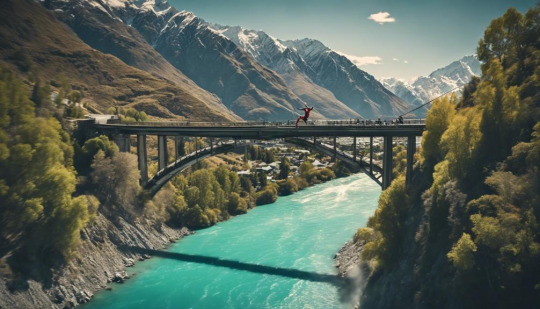
New Zealand has earned its reputation as the "adventure capital of the world," and for good reason. The country’s stunning landscapes, ranging from volcanic mountains to pristine lakes, provide a natural playground for adrenaline junkies. Queenstown, in particular, is a hotbed of adventure activities, including bungee jumping, skydiving, white-water rafting, and jet boating. For those who prefer to stay on the ground, the Tongariro Alpine Crossing offers a challenging hike with breathtaking views of volcanic craters and turquoise lakes. Whether you're a first-timer or an experienced adventurer, New Zealand’s diverse terrain guarantees an unforgettable experience.
2. Costa Rica: A Central American Paradise
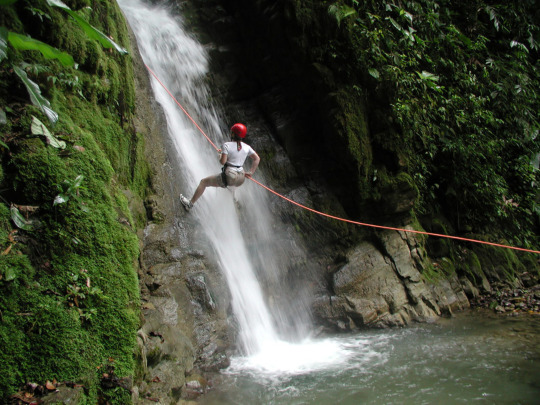
Costa Rica is a haven for adventure enthusiasts with its lush rainforests, volcanic peaks, and pristine coastlines. It’s one of the best places in the world for zip-lining, especially in the Monteverde Cloud Forest, where you soar over the canopy for an exhilarating experience. Surfing is also popular along Costa Rica’s Pacific coast, where the waves are perfect for both beginners and advanced surfers. For a truly heart-pounding experience, white-water rafting in the Sarapiquí or Pacuare Rivers offers adrenaline-filled rapids set against some of the most stunning natural backdrops. Costa Rica’s biodiversity and focus on conservation make it a must-visit for eco-adventurers.
3. Patagonia: The Ultimate Outdoor Playground
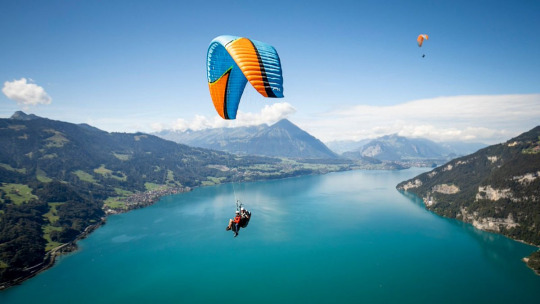
Located in the southernmost regions of Chile and Argentina, Patagonia is an untouched paradise for hikers, climbers, and outdoor lovers. The region’s dramatic landscapes are filled with glaciers, towering peaks, and sweeping valleys, making it a top destination for trekking. Torres del Paine National Park in Chile offers some of the best hiking in the world, with trails that take you past stunning granite towers, turquoise lakes, and wild, rugged terrain. Whether you’re tackling the famous W Trek or attempting to summit Mount Fitz Roy in Argentina, Patagonia offers some of the most breathtaking adventures on Earth.
4. Nepal: The Gateway to the Himalayas
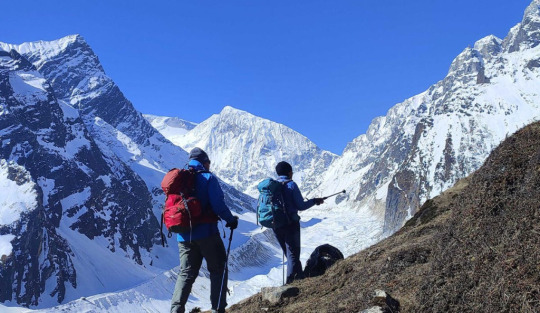
For thrill seekers with a love for mountain climbing and high-altitude trekking, Nepal is a dream destination. Home to the world’s highest peak, Mount Everest, Nepal is the perfect base for an epic adventure. The Everest Base Camp trek is a challenging but accessible option for those who want to experience the majesty of the Himalayas without summiting Everest itself. For more experienced climbers, there are opportunities to attempt peaks like Annapurna and Lhotse. Beyond trekking, Nepal offers thrilling white-water rafting, jungle safaris in Chitwan National Park, and paragliding over the stunning Pokhara valley.
5. South Africa: Safaris and Extreme Sports
South Africa is a land of contrasts, combining extreme sports with iconic wildlife experiences. Cape Town is a hotspot for adventure travel, offering rock climbing up Table Mountain, cage diving with sharks, and paragliding off Signal Hill. The country’s diverse ecosystems also provide opportunities for wildlife enthusiasts to embark on safaris in Kruger National Park or the Eastern Cape, where you can encounter the Big Five: lions, elephants, buffaloes, leopards, and rhinoceroses. For those seeking an adrenaline rush, bungee jumping off the Bloukrans Bridge, one of the world’s highest bungee jumps, offers an unforgettable experience.
6. Iceland: Nature’s Playground
Iceland is a land of fire and ice, with its volcanic landscapes, glaciers, geysers, and waterfalls making it a dream destination for adventure seekers. The island is home to some of the most unique outdoor activities, such as ice climbing on glaciers, snorkeling in the Silfra Fissure between tectonic plates, and exploring lava caves. For a truly otherworldly experience, take a dip in the Blue Lagoon, a geothermal spa surrounded by volcanic rocks, or trek across black sand beaches and frozen landscapes. Iceland’s dramatic scenery and adventurous spirit make it a top pick for thrill-seekers.
Conclusion
For those seeking adventure, these destinations offer experiences that are as diverse as they are thrilling. Whether you're conquering mountain peaks, diving into the deep blue, or navigating wild rivers, these locations provide the perfect combination of challenge and excitement. Adventure travel not only pushes you to your limits but also opens doors to unforgettable memories in some of the most stunning environments on the planet. Whether you're a seasoned adventurer or a newcomer, these destinations promise an adrenaline-filled journey that you won’t soon forget.
1 note
·
View note
Text
Discover the Gokyo Valley Trek: A Himalayan Gem
The Gokyo Valley Trek is one of the most amazing adventures in Nepal. It is filled with stunning mountains, colorful lakes, and unique villages. If you dream of exploring nature and seeing incredible views, this trek is a perfect choice.
What is the Gokyo Valley Trek?
The Gokyo Valley Trek is a journey through the Everest region. Trekkers follow trails that pass by rivers, forests, and glaciers. Along the way, they discover breathtaking sights, including the famous Gokyo Lakes and the towering Gokyo Ri viewpoint.
Top Reasons to Visit Gokyo Valley
1. The Gokyo Lakes
The Gokyo Lakes are the heart of the trek. There are six sparkling lakes, and their bright blue water looks magical. These lakes are also sacred to the local people.
2. Panoramic Mountain Views
From Gokyo Ri, trekkers can enjoy 360-degree views of Mount Everest and other snowy peaks. It’s a view like no other.
3. Quiet Trails
The Gokyo Valley Trek is less crowded than other popular treks. This makes it a peaceful experience, perfect for connecting with nature.
4. Sherpa Culture
Trekkers can visit villages and meet the Sherpa people. Their traditions, food, and lifestyle are a special part of the trek.
How Hard is the Trek?
The trek is not too easy, but it’s not the hardest one either. It’s called a moderate trek. Trekkers need to walk uphill and downhill for hours each day. The altitude can make breathing difficult, so resting and going slowly are important.
When to Go?
The best times for the Gokyo Valley Trek are:
Spring (March to May): Flowers bloom, and the weather is mild.
Autumn (September to November): The skies are clear, and the views are the best.
Avoid the monsoon season because the trails can get muddy.
What to Pack?
Packing the right things makes the trek easier. Here are some must-haves:
Warm clothes, especially jackets and gloves.
Sturdy trekking shoes.
A hat and sunglasses to protect from the sun.
A water bottle and snacks for energy.
Why Hire a Guide?
Hiring a guide is a smart idea. Guides know the way and help with safety. They can also share stories about the area. Female guides are also available, and many trekkers feel comfortable with them.
Highlights of the Trek
Here’s what makes the trek special:
Walking next to the Ngozumpa Glacier, the biggest glacier in Nepal.
Reaching the top of Gokyo Ri for sunrise or sunset views.
Spotting animals like yaks and mountain goats.
Crossing suspension bridges over rushing rivers.
Staying Safe on the Trek
Walk slowly to adjust to the high altitude.
Drink plenty of water.
Take breaks whenever needed.
Follow the guide’s advice.
Conclusion
The Gokyo Valley Trek is an adventure filled with beauty and excitement. From its peaceful lakes to towering mountains, every part of the trek is unforgettable. This trek is not just a journey; it’s a chance to see one of the most amazing places on Earth.
0 notes
Text
Lumbini: A Traveler’s Guide to Buddha’s Birthplace

Looking for a mix of history, spirituality, and adventure? Head to Lumbini, a serene yet fascinating destination in southern Nepal. Known as the birthplace of Buddha, this ancient site offers a unique experience for adventurous travelers and trekkers. Whether you’re exploring Nepal’s cultural triangle of Kathmandu, Bhaktapur, and Lumbini or seeking a peaceful retreat, this guide will help you plan the perfect trip.
Why Visit Lumbini?
Lumbini isn’t just for pilgrims. While it’s a spiritual hotspot for Buddhists, it’s also a haven for history buffs, trekkers, and anyone intrigued by Nepal’s cultural richness. With its ancient ruins, lush gardens, and modern monasteries, Lumbini is a place where history comes alive in a peaceful, natural setting.
Top Experiences in Lumbini
1. The Maya Devi Temple
This is the heart of Lumbini. The Maya Devi Temple marks the exact spot where Queen Maya gave birth to Siddhartha Gautama. Inside, you’ll find ancient carvings and the marker stone pinpointing Buddha’s birthplace.
2. The Ashokan Pillar
Adventure seekers will appreciate the journey to this historic relic. Built in 249 BCE by Emperor Ashoka, the Ashokan Pillar stands as a testament to Lumbini’s significance in Buddhist history.
3. Explore the Monastic Zone
Love architecture? The Monastic Zone in Lumbini features stunning monasteries built by countries like Thailand, Germany, and Japan. Each monastery reflects its culture's unique take on Buddhist tradition. The serene pathways connecting them are ideal for long walks.
4. Sacred Garden Strolls
The Sacred Garden is a peaceful haven filled with prayer flags, ponds, and ancient ruins. Take a slow walk, soak in the tranquil vibes, and snap some Instagram-worthy photos.
5. Lumbini Crane Sanctuary
Nature enthusiasts shouldn’t miss the Lumbini Crane Sanctuary. It’s home to the endangered Sarus crane and a variety of migratory birds. Perfect for a relaxed afternoon of birdwatching.
Adventure Beyond Lumbini
If you’re an adventure traveler, combine Lumbini with other exciting destinations in Nepal.
Kathmandu: The capital city Kathmandu offers a vibrant mix of ancient temples and bustling markets. Visit UNESCO World Heritage Sites like Swayambhunath (the Monkey Temple) and Pashupatinath.
Bhaktapur: Just outside Kathmandu, Bhaktapur is medieval city is perfect for trekking through narrow streets lined with historic buildings, pottery workshops, and ancient courtyards.
After soaking in Nepal’s city vibes, Lumbini provides a refreshing change with its calm and quiet charm.
When to Visit Lumbini
The best time to visit is between October and March, when the weather is cool and pleasant for walking or exploring. For a cultural bonus, plan your trip around Buddha Jayanti (usually in May), when Lumbini comes alive with vibrant celebrations.
Getting to Lumbini
Reaching Lumbini is an adventure in itself!
By Air: Fly to Gautam Buddha International Airport (near Lumbini) from Kathmandu.
By Road: Take a scenic drive from Kathmandu or Bhaktapur. Buses are available, but hiring a private car offers more flexibility for stopovers.
Tips for Adventure Travelers
Pack Light: Lumbini’s sites are best explored on foot. Comfortable shoes are a must.
Stay Hydrated: Southern Nepal can get warm, so carry plenty of water.
Blend Trekking with History: Plan a trek in the nearby hills or forests to balance the cultural experience with outdoor adventure.
Engage Locals: The people of Nepal are incredibly welcoming. Chatting with locals can lead to hidden gems and great food spots.
Why Lumbini Should Be on Your List
Lumbini is more than a spiritual destination. It’s a place where history, nature, and culture meet. For trekkers and adventure travelers, it’s the perfect blend of peaceful exploration and cultural immersion. Add it to your Nepal itinerary along with Kathmandu and Bhaktapur, and you’ll experience the best this incredible country has to offer.
Start planning your adventure to Lumbini today – where history and serenity await!
0 notes
Text
Nepal Yatra - Shiv Shankar Tirth Yatra
Nepal, the land of majestic mountains, ancient temples, and rich spiritual traditions, offers a divine experience for those seeking peace, devotion, and adventure. Known for being the birthplace of Lord Buddha and home to some of the holiest Hindu temples, Nepal Yatra is a transformative journey for any spiritual seeker. At Shiv Shankar Train Yatra, we invite you to join us on a well-organized and enriching pilgrimage to the most revered sacred sites in Nepal.
The Spiritual Significance of Nepal Yatra
Nepal is not just a place of natural beauty; it is a land of deep spirituality, where pilgrims come from across the world to seek blessings and divine grace. A Nepal Yatra offers a unique blend of Hindu and Buddhist sacred sites, each holding immense spiritual significance. The journey through Nepal takes you to some of the holiest and most serene locations that are associated with the divine, where both religious history and mythological tales come alive.

One of the most revered pilgrimage sites in Nepal is Pashupatinath Temple in Kathmandu, dedicated to Lord Shiva. Situated on the banks of the Bagmati River, Pashupatinath is a UNESCO World Heritage site and is one of the holiest temples for Hindus. The sacred temple complex is known for its magnificent architecture, with a gold-plated pagoda-style roof, and is a place of deep spiritual significance. Pilgrims from around the world come here to offer prayers, seek blessings, and witness the evening aarti, a mesmerizing devotional ceremony that radiates a sense of peace and tranquility.
Key Destinations of Nepal Yatra
A Nepal Yatra with Shiv Shankar Train Yatra includes visits to several important spiritual destinations, each with its unique history and significance. Here are some of the top destinations you will explore during this divine journey:
Pashupatinath Temple, Kathmandu: As mentioned, this is one of the most sacred temples dedicated to Lord Shiva. It attracts millions of devotees annually, and the temple’s presence on the banks of the Bagmati River makes it even more powerful spiritually. The cremation ghats near the temple are considered highly auspicious for seeking Moksha (liberation).
Muktinath Temple: Located in the Mustang region of Nepal, Muktinath is one of the holiest places for Hindus and Buddhists. Situated at an altitude of 3,800 meters, it is dedicated to Lord Vishnu and is believed to offer salvation to those who visit. The temple is surrounded by natural beauty, with 108 water spouts symbolizing purification.
Lumbini – The Birthplace of Lord Buddha: Lumbini is the birthplace of Lord Buddha, making it an important destination for both Hindu and Buddhist pilgrims. It is a UNESCO World Heritage site with temples, monasteries, and the famous Maya Devi Temple, where you can witness the sacred marker of the exact spot where Buddha was born.
Swayambhunath (Monkey Temple), Kathmandu: This iconic Buddhist temple, perched atop a hill, offers stunning panoramic views of Kathmandu Valley. The stupa is a UNESCO World Heritage site and is an important pilgrimage site for Buddhists, offering a peaceful ambiance for meditation and reflection.
Why Choose Shiv Shankar Train Yatra for Your Nepal Yatra?
At Shiv Shankar Train Yatra, we take immense pride in offering a comprehensive and comfortable pilgrimage experience to Nepal. Our services are designed to ensure that your spiritual journey is not only fulfilling but also convenient and hassle-free. Here's what sets our Nepal Yatra apart:
Comfortable Travel: We provide well-organized train travel services, ensuring you enjoy a smooth, comfortable ride to and from Nepal.
Guided Tours: Our expert guides will accompany you, offering insights into the history, culture, and significance of each destination. They ensure that you experience each place’s spiritual depth to the fullest.
Cultural Immersion: Beyond visiting temples, you’ll also have the opportunity to experience Nepalese culture, with its unique blend of traditions, festivals, and cuisine. You can engage in local customs and rituals, making your journey even more enriching.
Safety and Convenience: With Shiv Shankar Train Yatra, you can rest assured that every aspect of your trip is taken care of, from accommodation and meals to local transportation and temple visits.
Conclusion
A Nepal Yatra with Shiv Shankar Train Yatra is more than just a pilgrimage; it is an immersive spiritual journey through one of the world’s most sacred lands. Whether you’re visiting the Pashupatinath Temple, soaking in the serenity of Muktinath, or standing at the birthplace of Lord Buddha in Lumbini, this yatra promises to deepen your spiritual connection and bring you closer to the divine. Join us on this divine adventure, and experience Nepal’s sacred sites in the most comfortable and fulfilling way possible.
Embark on a Nepal Yatra with Shiv Shankar Train Yatra and explore the divine treasures of this spiritual paradise!
0 notes
Text
Travel Company in Kathmandu Tips: Best Places To Visit This Winter!

Would you want to escape this winter to somewhere with breathtaking mountain vistas, fascinating history, and unique events? Amazing things simply waiting to be found abound in Nepal's energetic metropolis, Kathmandu. The city and the surrounding environs transform into a stunning landscape full of both excitement and tranquillity when winter arrives. Whether your search is for a thrilling adventure or peace of mind, this time of year is really fantastic. Finding the finest sites to see and activities to do in Nepal during the winter might vary greatly depending on the respected travel company in Kathmandu you work with.
Look Around At The Enigmatic Durbar Square.
Winter visits to Kathmandu will help you to understand why this location is UNESCO World Heritage. The stillness in the colder months is ideal for seeing the intricate churches and historic structures around the plaza. Telling you fascinating tales and providing historical context would help a tour guide from a reputable travel company in Kathmandu enhance your trip.
Stunning Views From Nagarkot
If you like to view the Himalayas from above, Nagarkot is the greatest location in the winter. Only a short drive from the hub of Kathmandu, this hill station offers the finest view of the dawn over the snow-capped mountains. Better vistas often accompany the winter months, which facilitates the view of Mount Everest and other striking mountains.
The City Of Fine Arts: Patan
The calm winter air enhances the blend of art and culture Patan, often known as Lalitpur, offers. When winter sunshine fills its Durbar Square—which features pagoda-style structures, stone sculptures, and beautiful gardens—it appears even more appealing.
Enjoy Nature In Shivapri Nagarjun National Park.
If you like to savour both the environment and thrills, Shrimp Nagarjun National Park is a fantastic location. Just outside of Kathmandu is this large park. Great hiking paths into deep forests, by peaceful streams, and to breathtaking views abound in the winter.
The Emotional Effect Of Swayambhunath And Boudhanath Stupas
Winter stillness in Kathmandu gives it a perfect time to see its well-known stupas. On top of a hill, the Monkey Temple, often known as Swayambhunath, has a perspective of the whole city that is even greater in the winter when the sky is clear.
Bhaktapur: An Evolution Through Time
From Kathmandu, Bhaktapur, a winter paradise with rich mediaeval architecture and culture, is a short drive. Walking through the little streets, historic gardens, and magnificent cathedrals of the town, you feel as if you are returning in time.
Relaxing Near The Phewa Lake In Pokhara
About three hours from Kathmandu, Pokhara is a quiet destination to finish your winter trip. Although technically this region is outside the city, its beauty and tranquillity make it worthwhile to visit.
Conclusion
So, visiting Kathmandu and the surrounding areas is best done in winter. One may appreciate many cultural and natural beauties. See a Travel Company in Kathmandu to improve your journey during the Christmas season. They can help you locate unusual events appropriate for your interests, ensure your vacation runs without a hitch, and show you the top sights. Whether it's the ancient grandeur of Durbar Square, the serene tranquillity of the stupas, or the exhilaration of climbing in Shivapuri, Nepal's winter will be a time you'll never forget.
0 notes
Text
Discover the Himalayas: An Alpine Paradise
The mighty Himalayas, stretching across five countries and serving as the world’s highest mountain range, have captivated adventurers, spiritual seekers, and nature lovers for centuries. Whether you’re looking for tranquility amidst towering peaks, thrilling outdoor adventures, or a cultural experience that taps into ancient traditions, a Himalayan Tour Package offers something for everyone. The Himalayas represent more than just mountains; they are a sanctuary for the soul, a place where people come to reconnect with themselves and with nature.
In this article, we will explore the various facets of a Himalayan tour, the unique experiences you can expect, and how an escape into these mountains can offer more than just a holiday—it can be a life-changing experience. Whether you’re trekking through remote villages, exploring spiritual monasteries, or simply soaking in the breathtaking views, the Himalayas promise a journey of self-discovery and awe.
Why Choose a Himalayan Tour Package?
A Himalayan Tour Package combines the best of nature, adventure, culture, and spirituality. When you book one, you’re not just signing up for a vacation; you’re embarking on a transformative experience. These packages are carefully curated to include various elements like trekking, sightseeing, cultural immersion, and spiritual retreats. Here are some of the compelling reasons why you should consider a Himalayan tour:
1. Breathtaking Scenery
The Himalayas are synonymous with stunning landscapes. Snow-capped peaks, lush valleys, cascading waterfalls, and pristine rivers are all part of the terrain. Each destination within the Himalayas offers its own unique natural beauty. Whether you’re gazing at the towering Mount Everest in Nepal, exploring the sacred Mount Kailash in Tibet, or trekking through the picturesque valleys of Bhutan, you’ll be constantly awestruck by the grandeur of nature.
2. Adventure Awaits
For adrenaline junkies, a Himalayan Tour Package offers plenty of adventure. From trekking the Annapurna Circuit to conquering the challenging paths of Ladakh, the Himalayas are a playground for outdoor enthusiasts. You can go white-water rafting on the wild rivers of Himachal Pradesh, camp under the stars in remote valleys, or paraglide over the stunning landscapes of Sikkim. Whether you’re an experienced mountaineer or a first-time hiker, there’s an adventure suited to your skill level.
3. Cultural Immersion
One of the best parts of traveling through the Himalayas is the opportunity to immerse yourself in rich, ancient cultures. The Himalayan region is home to diverse ethnic communities, each with its own unique traditions, languages, and festivals. In Nepal, you can explore the vibrant city of Kathmandu, visit the ancient temples of Bhaktapur, and witness the rituals at Pashupatinath. In Bhutan, you’ll experience the deep-rooted Buddhist culture, from visiting monasteries perched on cliffs to attending colorful religious festivals. Every Himalayan Tour Package allows you to dive deep into the local customs and lifestyles.
4. Spiritual and Wellness Retreats
The Himalayas have long been a destination for spiritual seekers. Many come here to meditate, attend yoga retreats, or find inner peace in the remote monasteries. The region is home to some of the world’s most sacred religious sites, including the famous Potala Palace in Tibet, the birthplace of the Buddha in Lumbini, and the beautiful monasteries of Dharamshala, India. These spiritual retreats offer visitors a chance to relax, rejuvenate, and reflect in serene surroundings. Many Himalayan Tour Packages include visits to meditation centers, yoga ashrams, and monasteries, making it the perfect getaway for those seeking spiritual rejuvenation.
Top Destinations in the Himalayas
A Himalayan Tour Package typically covers some of the most iconic and awe-inspiring destinations across the region. Depending on the package you choose, you may explore one or more of these stunning locations.
1. Leh-Ladakh (India)
Situated in the northernmost region of India, Ladakh is a land of high-altitude deserts, colorful monasteries, and crystal-clear lakes. Often referred to as "Little Tibet," Ladakh offers stark, dramatic landscapes unlike anywhere else in the world. Trekking, mountain biking, and visiting the ancient monasteries of Hemis, Thiksey, and Alchi are some of the highlights of a Ladakh Himalayan Tour Package.
2. Nepal
Nepal is often regarded as the gateway to the Himalayas, and for good reason. The country is home to eight of the world’s highest peaks, including Mount Everest. Whether you’re trekking to Everest Base Camp, exploring the Annapurna Range, or visiting the temples of Kathmandu Valley, a Himalayan Tour Package in Nepal offers a perfect blend of adventure, culture, and spirituality. Pokhara, with its tranquil lakes and views of the Annapurna Mountains, is also a must-visit destination for nature lovers.
3. Bhutan
The kingdom of Bhutan, often referred to as the "Last Shangri-La," offers a uniquely preserved Himalayan culture that is deeply rooted in Buddhist traditions. The country is famous for its "Gross National Happiness" philosophy, which promotes well-being over material wealth. A Himalayan Tour Package in Bhutan often includes visits to its famous monasteries like the Tiger’s Nest Monastery, hikes through untouched forests, and participation in local festivals. Bhutan’s strict tourism policies ensure that the country remains an unspoiled gem of the Himalayas.
4. Tibet
Known as the "Roof of the World," Tibet is a mystical land of snow-capped mountains, ancient monasteries, and spiritual teachings. Lhasa, the capital, is home to the iconic Potala Palace and Jokhang Temple, while Mount Kailash is a pilgrimage site for both Hindus and Buddhists. A Himalayan Tour Package in Tibet allows you to delve into the spiritual heart of the Himalayas while experiencing its breathtaking landscapes.
5. Sikkim and Darjeeling (India)
Sikkim is one of India’s smallest states but offers an abundance of natural beauty. From the serene Tsomgo Lake to the majestic Kanchenjunga Mountain, Sikkim is a paradise for nature lovers and trekkers. Darjeeling, famous for its tea gardens, also offers panoramic views of the Himalayas. A Himalayan Tour Package in this region will give you a blend of scenic beauty and cultural richness.
Choosing the Right Himalayan Tour Package
When it comes to selecting the perfect Himalayan Tour Package, it’s important to consider your interests and physical abilities. If you’re an adventure seeker, look for packages that include trekking, rafting, or paragliding. For those looking for spiritual and wellness retreats, consider a package that focuses on yoga, meditation, and visits to monasteries. If you prefer cultural immersion, opt for a tour that takes you through local villages, festivals, and historical sites.
Conclusion
An escape into the Himalayas is unlike any other travel experience. It’s a chance to step away from the chaos of modern life and immerse yourself in the serenity of towering peaks, ancient traditions, and spiritual practices. A Himalayan Tour Package offers a complete journey for the mind, body, and soul, blending adventure, culture, and tranquility into one unforgettable experience.
Whether you’re trekking through high-altitude passes, visiting sacred temples, or simply gazing at the mountains, the Himalayas have a way of leaving an indelible mark on your spirit. With the right Himalayan Tour Package, you’ll not only explore one of the world’s most awe-inspiring regions but also embark on a personal journey of transformation and discovery.
1 note
·
View note